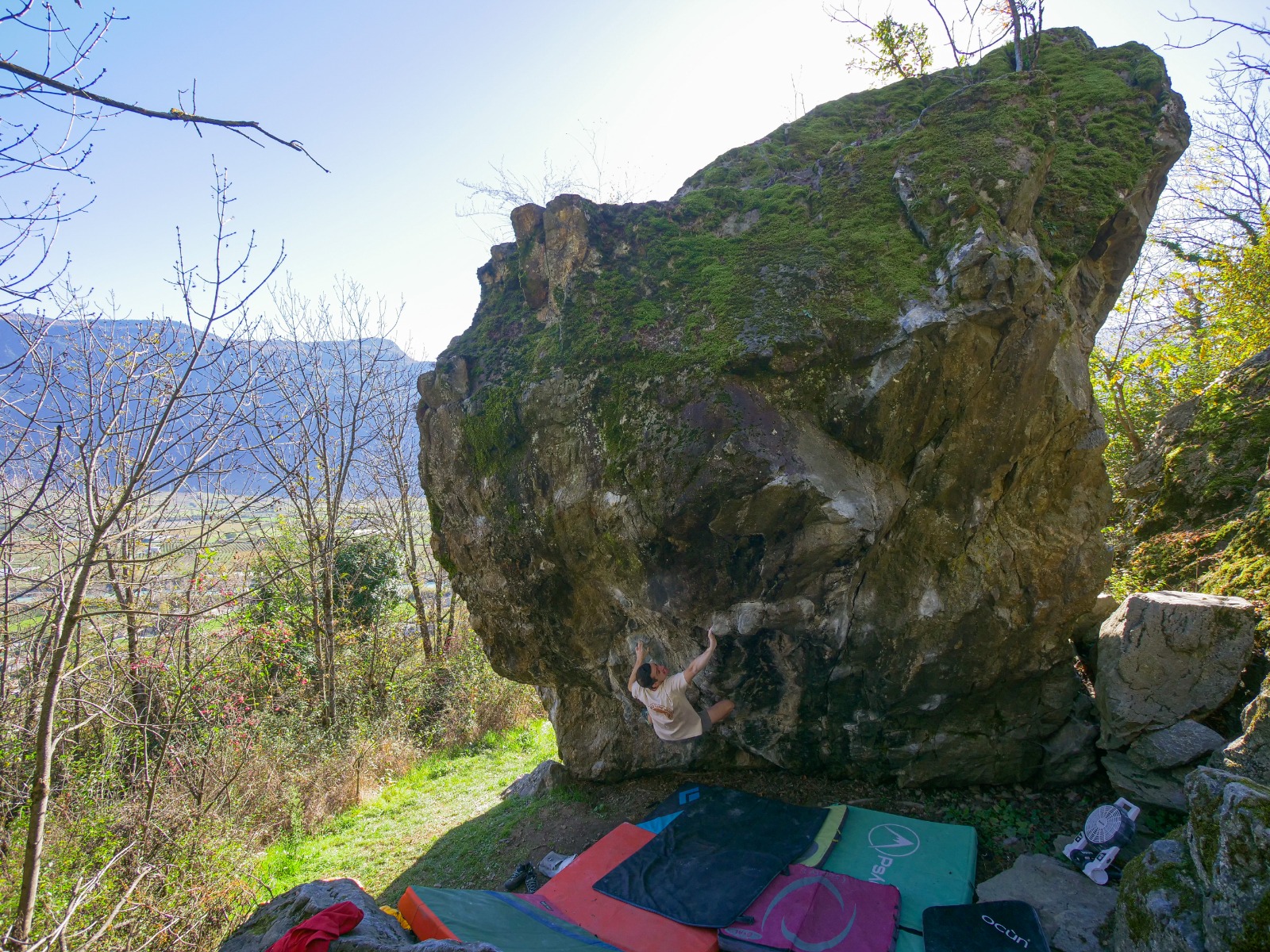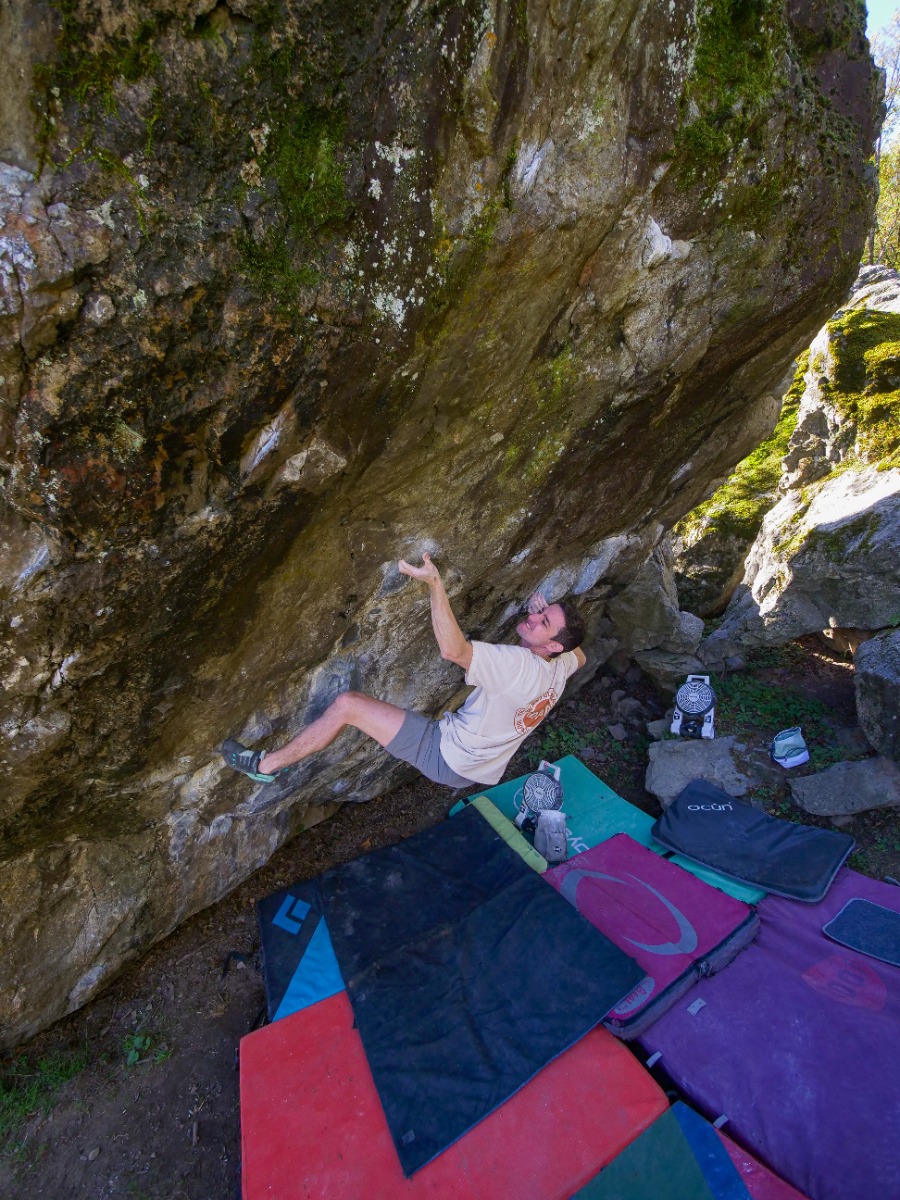
World Firsts: Collecting Bouldering History - Elliot Stephens
Climbing is many things to me. It’s movement, physical and mental challenge, and it’s travelling and the outdoors. However, a big part of what I engage with in individual boulders is their history. But what does history look like when it comes to boulders? They’re just small pieces of rock that someone eventually
came along and climbed. But like any famous mountain or route, it’s about the characters who’ve climbed them, the experiences they’ve had, and the
interaction between human and rock.
Since I started climbing I’ve been fascinated by the history of bouldering. The
boulder itself will almost always come first, whether the line draws you in, or the movement, or the look of the holds and the texture of the rock. But now and
again, I’m willing to overlook many of these factors to climb a historical boulder.
So in visiting the Valais area of Switzerland for the first time in October, history jumped right to the top of my list of priorities when choosing what boulders to try. Up above the tiny village of Branson in the valley above Martigny is a big lump of slate like gneiss. This boulder whilst thousands of years old, first became part of bouldering history in 1992. During this year, 5 years after his initial visit to Branson, Swiss climber Fred Nicole made the first ascent of La Danse De Balrog which would be recognised as the world’s first 8B/V13. The boulder is a sweeping line crossing the steep face of the boulder, starting seated on the left and topping out all the way on the right.
For Fred to give this boulder 8B back in this time was a big move. The list of 8A’s was very small, and 8A+ was in single figures. But the climbing certainlysupported this grade. The physical and finger intensive nature of the climbing is more akin to modern gym climbing than the style of 1992. It’s easy to forget that during this time hard bouldering was really in its infancy, and the majority of cutting edge climbing was on vertical and gently overhanging terrain. La
Danse starts out with a hard pull off a totally flat pinch, to another pretty flat side pull, with pretty poor and low feet. Board climbing 101. It then leads
straight into a few moves of opposing Gastons, which require tension in the shoulders and the core to negotiate. Then the style becomes compression, and
a few squeezy moves lead you to a final hard stab into another shouldery position. It’s properly engaging climbing. In the years to come, people would
start the boulder in a different place, find new beta and suggest that the boulder could be 8A+. Luckily a video exists of Fred Nicole climbing the
boulder, so my goal for the trip was simple. Repeat the boulder exactly as Fred climbed it. Now you could say this is ludicrous, and the line is the problem, not
the sequence. And whilst I’ve shared this exact view on many a boulder, with La Danse it was different. I wanted to experience exactly what Fred did, and test
myself against what was the top level of the time.
Arriving at the boulder on the first day of our trip without crash pads certainly added to the authenticity of the experience. I could picture Fred climbing above a tea towel with a single 3 inch layer of foam beneath him at the crux. So armed with an empty rucksack as a crash pad, we started to try the individual moves in the fading evening light. Even with some half hearted attempts, it was clear that the second move was a serious move. A small pinch, bad feet and a powerful pull. No place to hide. Tired from a 6am start, a flight and a long drive, we opted to come back the following morning with some crash pads and more spring in our step.
Come the next day, we were back armed with all manner of modern gadgets. 2 big pads, a fan, a brush stick and even a knee pad. Arriving with all this regalia, I was instantly aware of the irony of the situation I was in. I was trying to climb this strict and contrived sequence on the boulder, only to have all of these ‘aids’ that Fred was missing. But still, we pressed on and after a few falls at the finishing move I managed to climb the boulder, a few goes after Solly. So with this piece of history in the books, it was now time to look approximately 2 foot to the right of the start of La Danse, to the boulder problem called Radja.
After completing La Danse in 1992, Fred realised there was a line direct up the boulder, finishing out to the left. It wasn’t until 4 years later in 1996, that after 3 days of effort Fred would make the first ascent of Radja (meaning King), and suggesting the grade of 8B+/V14. This truly was a big step for bouldering. Not only does Fred complete the first of the 8B grade, but then the first of the next grade; and on the same boulder. In style, Radja is totally different to La Danse.
Where La Danse is a long rising line on mostly good holds, Radja is an intense 5 move boulder with an easy outro sequence. Just like La Danse, the climbing
style is atypical for the time. The first two moves are shouldery and involve a real snatch to catch an edge on the second move. Then you make the easiest
move of the boulder to a right hand shoulder, before placing a high and slippery left foot to pull your weight up over it to reach up into a flat undercut. Once you
have the undercut, it’s just the issue of building your right foot and reeling the undercut in to latch an incut edge with your right hand, and not fumbling the
easy top sequence. Basic as they come.
A few days after completing La Danse, I decided to come back to try Radja. Straight away I could tell I would enjoy the moves. I was able to climb the crux into the topout in only a few goes after working out which foothold to use. Suddenly there was just the first two moves to connect. However, these proved to be more difficult than they appeared, and whilst I was able to do them both in isolation, I couldn’t put them together. Soon enough the heat and failing skin made it a risk skin to continue to pull on the sharp crimp of the first move. Leave it for another day.
A quickly aborted second session mid way through the trip left it once again down to a last day session to try and complete. This time, with skin unexplainably more durable, and it came together quickly. Reminding myself to remove my right foot to fully weight the left at the crux, I was able to attempt the crux 5th move from the floor twice in a row. On the 3rd go, that little stretch further was enough to latch the incut crimp, and enjoy the run to the top of the boulder.
Getting sat in the sun on the top of a boulder is always a pleasure when the majority of your experience is sat in the shade trying to keep skin cool. It’s that extra little reward for the successful go. A bit of time to acknowledge Fred’s contribution, and what he must have experienced deciding on the line and climbing the sequence. But then of course the joy of feeling things come together on the last day of a trip, and climbing something you were really motivated for. A pleasure to have made my own little story in Branson, and collected a little more history along the way.



